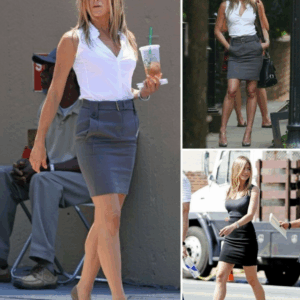The Royal Albert Hall, London, is a stage accustomed to spectacle, but on the evening of the Royal Variety Performance, the most captivating performance occurred before the curtain rose. All eyes were fixed not on the star-studded lineup of world-class entertainers, but on the triumphant return of Catherine, Princess of Wales. Stepping onto the red carpet alongside Prince William, the future Queen looked every inch the image of renewed health and poise, choosing an emerald green velvet gown that was not merely a fashion statement, but a powerful, non-verbal declaration: the Princess is back.
This appearance held a significance that transcended the usual scrutiny of a royal wardrobe choice. Following a period of necessary public absence for cancer treatment and recovery, Kate’s return to such a major, high-profile event was a magical moment celebrated globally. The selection of the dress—a stunning, figure-skimming velvet number by German label Talbot Runhof—was meticulously judged, wrapping the Princess in a rich, jewel-toned fabric that symbolised both festive glamour and resilient strength. It was the moment the world had waited for, a visual confirmation of her wellbeing delivered with unforgettable, effortless style.

The importance of this engagement cannot be overstated. Just days prior, the Princess had delivered her first public speech in almost a year, an emotional address that highlighted her foundational work on early childhood development and the “invisible thread” of love that creates resilience. The Royal Variety Performance, however, demands a shift from earnest policy to high glamour, a transition Catherine navigated with seamless grace. It was her sixth time attending the annual fundraising event for the Royal Variety Charity, which supports those who have worked professionally in the entertainment industry, but undoubtedly her most emotionally charged entrance.
The sheer power of her presence, looking radiant and confident, sent a noticeable ripple of energy through the crowd and across social media platforms, sparking what many royal commentators described as a global “fan frenzy.” This was the public’s clearest visual confirmation of her wellbeing, a moment of collective relief and admiration for her recovery. She was not just attending an event; she was symbolically reclaiming her space in the public sphere, demonstrating that the future of the monarchy, and her role within it, is firmly secured. Her smile, bright and genuine, and her confident demeanour spoke volumes, cementing the night as a true watershed moment in her public life.
To anchor such a significant moment, the dress had to be flawless, and the Talbot Runhof ‘Bobonne’ gown delivered on every front. The design, a body-hugging, floor-length sheath, was crafted from a luscious, dark emerald stretch velvet. Velvet, in itself, is a fabric heavy with regal association and festive promise; in this specific shade of green, it perfectly complemented the Princess’s warm, classic colouring while offering a subtle, shimmering alternative to standard sequins or silk, making it the perfect choice for a grand winter event at the Royal Albert Hall. The rich colour and texture immediately commanded attention, proving that sometimes, fabric choice is as important as the cut.

The unique architectural detail of the gown lay in its silhouette. Featuring an off-the-shoulder neckline and artful ruching across the bodice, the design was engineered to flatter and sculpt the figure, with the subtle stretch of the material allowing it to move gracefully with her. The dress flared gently at the knee into a slight mermaid skirt, creating a sense of dramatic movement as she walked the red carpet.
Adrian Runhof, the co-founder of the German label, expressed his shock and gratitude when he revealed that the Palace had given them only a half-hour’s notice that the Princess would be wearing their creation. This detail adds a layer of delightful spontaneity to the polished royal machine, suggesting the dress was a personal favourite pulled from her existing wardrobe—reportedly having been purchased some seasons ago—an item she felt intrinsically comfortable and confident wearing. Runhof’s subsequent comment that the dress, thanks to its stretch velvet composition, feels “as comfortable as a pair of pyjamas,” offered a fascinating glimpse behind the couture curtain, highlighting a pragmatic comfort that underlies Kate’s modern approach to high fashion, proving that even the most glamorous royal gowns can be surprisingly wearable. This revelation only endeared the Princess further to the public, showcasing her grounded sensibility despite her elevated position.
Perhaps the most compelling element of the Talbot Runhof choice, however, was the immediate comparison it drew to her late mother-in-law, Diana, Princess of Wales. Fashion analysts were quick to point out that the off-the-shoulder neckline and the slinky, body-skimming silhouette of the velvet gown bore a striking resemblance to the types of confident, figure-defining outfits Diana championed. Specifically, the neckline was seen as a more demure, yet still powerful, echo of Diana’s famous 1994 ‘Revenge Dress.’ This visual link was not accidental to the eye of the experienced royal watcher.
This comparison is potent. While the ‘Revenge Dress’ was an overt statement of defiance, Kate’s choice, two decades later, can be interpreted as a ‘Resilience Dress’—a subtle yet firm affirmation of her strength, her style confidence, and her commitment to her role, regardless of the recent private battles she has faced. By appearing in a gown that subtly nods to the style legacy of the past while firmly setting a confident, modern tone for the future, Catherine reinforced the narrative of continuity and strength within the monarchy. It was a nod to heritage without being beholden to it, a clear demonstration that her personal style is evolving into one of regal power and self-assuredness. This move signals a coming into her own as the Princess of Wales, confident enough to reference history while defining her own chapter.

If the gown represented modern confidence, the accessories she chose were steeped in powerful royal history, ensuring the look was anchored in tradition. The Princess opted for an extraordinary selection of jewels from the vault, bringing the silent narrative of the Crown into the contemporary spotlight.
Dominating her look were the breathtaking Greville Diamond Chandelier Earrings. An exquisite Art Deco design by Cartier, these spectacular earrings were a cherished favourite of the late Queen Elizabeth II, who inherited them from her mother. Their presence added not only spectacular sparkle but also a powerful, emotional link to the enduring matriarch of the family, suggesting a passing of the torch and the continuity of the institution.
Paired with the earrings was Queen Mary’s Diamond Bar Choker Bracelet, a spectacular piece created by Garrard & Company in 1932, originally designed as a choker but frequently worn as a bangle. The use of these weighty, historical diamonds alongside a modern, non-British designer showed Catherine’s masterful ability to balance tradition and personal style. She allows the fashion to speak to the current moment, while letting the jewels carry the immense weight of royal heritage and lineage, a subtle acknowledgment of the responsibilities that come with her station. Completing the look were Manolo Blahnik dark green velvet pumps, which matched the dress perfectly, and a sparkling silver Jenny Packham ‘Casa’ clutch, coordinating accessories that maintained the rich, festive aesthetic and added a final touch of polished glamour.
The collective sigh of admiration that greeted the Princess’s arrival was more than just appreciation for a beautiful outfit. It was a societal acknowledgement of a turning point. Her radiant appearance, despite the biting November cold—a detail noted by fans concerned for her comfort—was interpreted as a profound display of dedication, showcasing her commitment to her duties even as she manages her recovery.
The narrative surrounding her attendance was further enriched by her engaging interactions during the evening. She was photographed warmly greeting performers, including a particularly moving moment with singer Jessie J, whom she praised for a powerful performance dedicated to the singer’s late bodyguard. These moments of authentic human connection, juxtaposed with the dazzling formality of the gown and jewels, reinforced her approachable and empathetic persona, reminding the public that behind the glamour is a compassionate individual deeply dedicated to the welfare of others.
In the tapestry of her royal career, Catherine, Princess of Wales, has consistently used fashion as a subtle but effective communication tool. Her choice of the Talbot Runhof velvet gown was perhaps her most compelling use of this tool yet. It was a blend of personal comfort, effortless glamour, and historical homage, creating an image of resilience that transcended the event itself. She walked the red carpet not just as a style icon, but as a future Queen making a determined, stunningly executed comeback. The velvet gown was the symbol of her vow: to return, to thrive, and to continue to dazzle. The message is clear: the Princess of Wales is stronger, happier, and more magnificent than ever before, and the world is raptly watching her next move.





